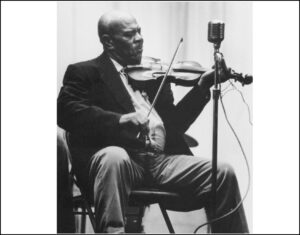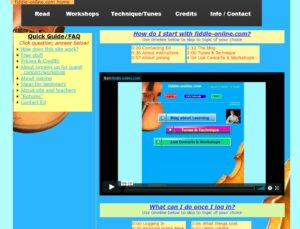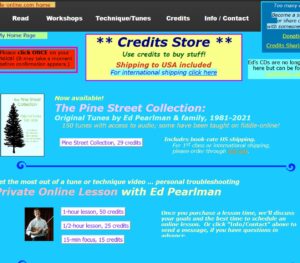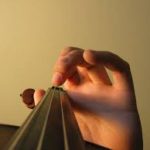Early 20th century social campaigns by influential moguls such as Henry Ford successfully and falsely reframed American folk music and dance as white and rural. Sadly, those biased campaigns had long-lasting effects. We have very few recordings of Black fiddlers, for example, because record companies decided there was no market for their music, even though Black fiddlers, dance musicians and dance callers made up about half of America’s talent in the 19th century, dating back to well before George Washington.
Old Hat Records has an interesting article on the topic which discusses the early phonograph records that did include Black fiddlers.
Another interesting article is about Teadar Jackson (1903-1966), a Black Texas fiddler. The article discusses him and the general topic as well. It quotes Tony Thomas in “Why Black Folks Don’t Fiddle” who writes “Black fiddling was fairly popular in the 19th century and in the early part of the 20th Century when string band playing and dancing were dominant in rural Black communities. Even when the blues and its own dancing replaced the older music starting at the turning of the century, fiddles, unlike five-string banjos, tended to be included in blues bands, and to accompany solo blues artists on records. Yet, in the 1940s when blues bands went from being acoustic band to electric, with the exception of a great few, Black popular fiddling disappears.”
On fiddle-online there’s a good tune by Alvah Belcher that taught me a lot when I shared the tune in a workshop. Belcher died in 1900 and was extremely popular and influential as a dance caller, fiddler, bandleader and tune writer. He also owned a store in his town. He was one person Henry Ford wanted to pretend didn’t exist: Belcher was neither white nor rural. You can learn the tune, hear a sample of it, and pick up more info about Alvah Belcher in this group of workshops.
A fascinating article on the subject was written by Jacqueline Cogdell Djedje and published by Cambridge University Press. It’s called “The (Mis)Representation of African American Music: The Role of the Fiddle.”
This article is usually linked at the top of our special Juneteenth fiddle-online home page on June 19. Juneteenth has been celebrated for many years but became an official U.S. federal holiday as of June 2021. It commemorates the finalizing of Abraham Lincoln’s Emancipation Proclamation of 1863. The final order, signed on June 19, 1865, ended slavery in Texas, the last state to allow it.
Hoping to have a good Black fiddle performer/teacher share music with us at fiddle-online in a concert/workshop. At this writing, no luck so far, but we’ll keep trying, and suggestions are welcome!
©2022 Ed Pearlman









